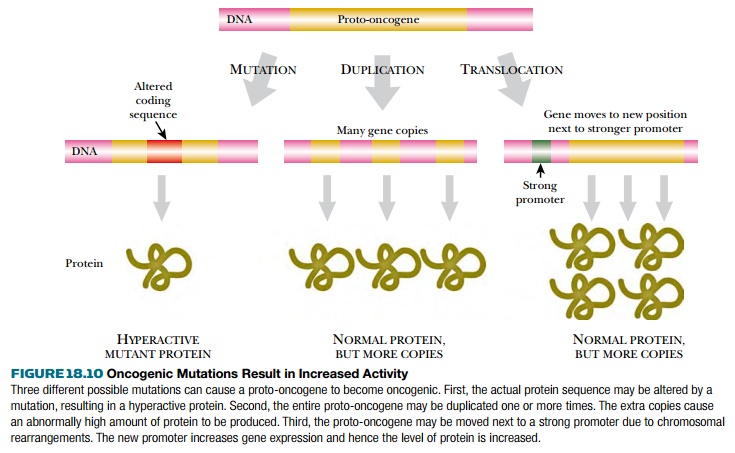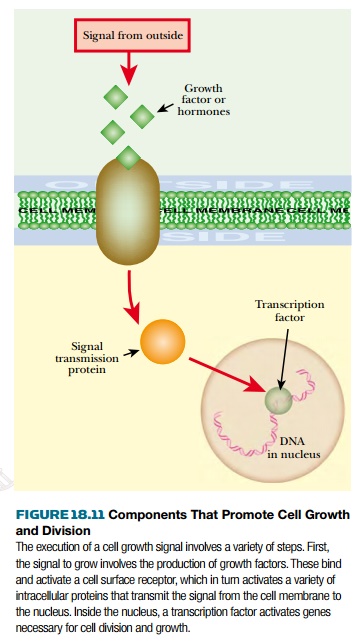Chapter: Biotechnology Applying the Genetic Revolution: Molecular Biology of Cancer
Types of Mutations That Generate Oncogenes
TYPES OF MUTATIONS
THAT GENERATE ONCOGENES
The mutations that create oncogenes
are dominant and result in increased cell division. This is because oncogenic
mutations do not result from loss of activity but from increased activity of
the product encoded by the oncogene. Such gain-of-function mutations may be due
either to alteration of the protein encoded by the proto-oncogene or to its
increased production (Fig. 18.10). Consequently, the wild-type duplicate copy
of the proto-oncogene cannot overcome the effect of the oncogene. Like any
other gene, a proto-oncogene has a regulatory region plus a structural region
that encodes a protein. Some oncogenes are the result of changes in the
regulatory region that increase gene expression. Others are due to mutations in
the structural portion of the proto-oncogene that produce a protein with
increased activity.


The pathway for activating cell
growth and division has several stages, and proto-oncogenes encode the proteins
taking part in this scheme (Fig. 18.11). Not surprisingly, mutations that
result in hyperactivation of any of these components can turn proto-oncogenes
into oncogenes. The major components involved in cell division are:
1.
Growth factors: These are proteins or other chemical
messengers circulating in the blood that carry signals for promoting growth to
the cell surface.
2.
Cell surface receptors: These proteins are found in the cell
membrane where they receive chemical messages from outside the cell. They pass
the signal on, often by activating other proteins, such as G-proteins.
3.
Signal transduction proteins: These pass on the signal from
outside the cell to proteins or genes involved in cell division. Many of these
are protein kinases that activate or inactivate other proteins by addition of a
phosphate group.
4.
Transcription factors: These proteins bind to and switch on
genes in the cell nucleus. This results in the synthesis of new proteins, as
opposed to the activation of those already present.
Related Topics